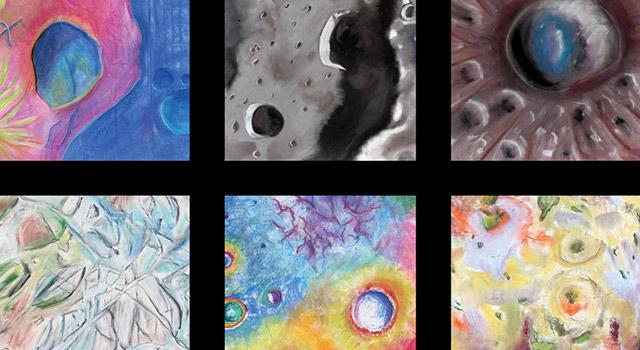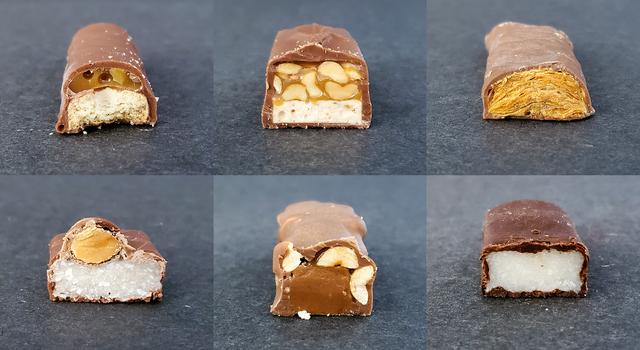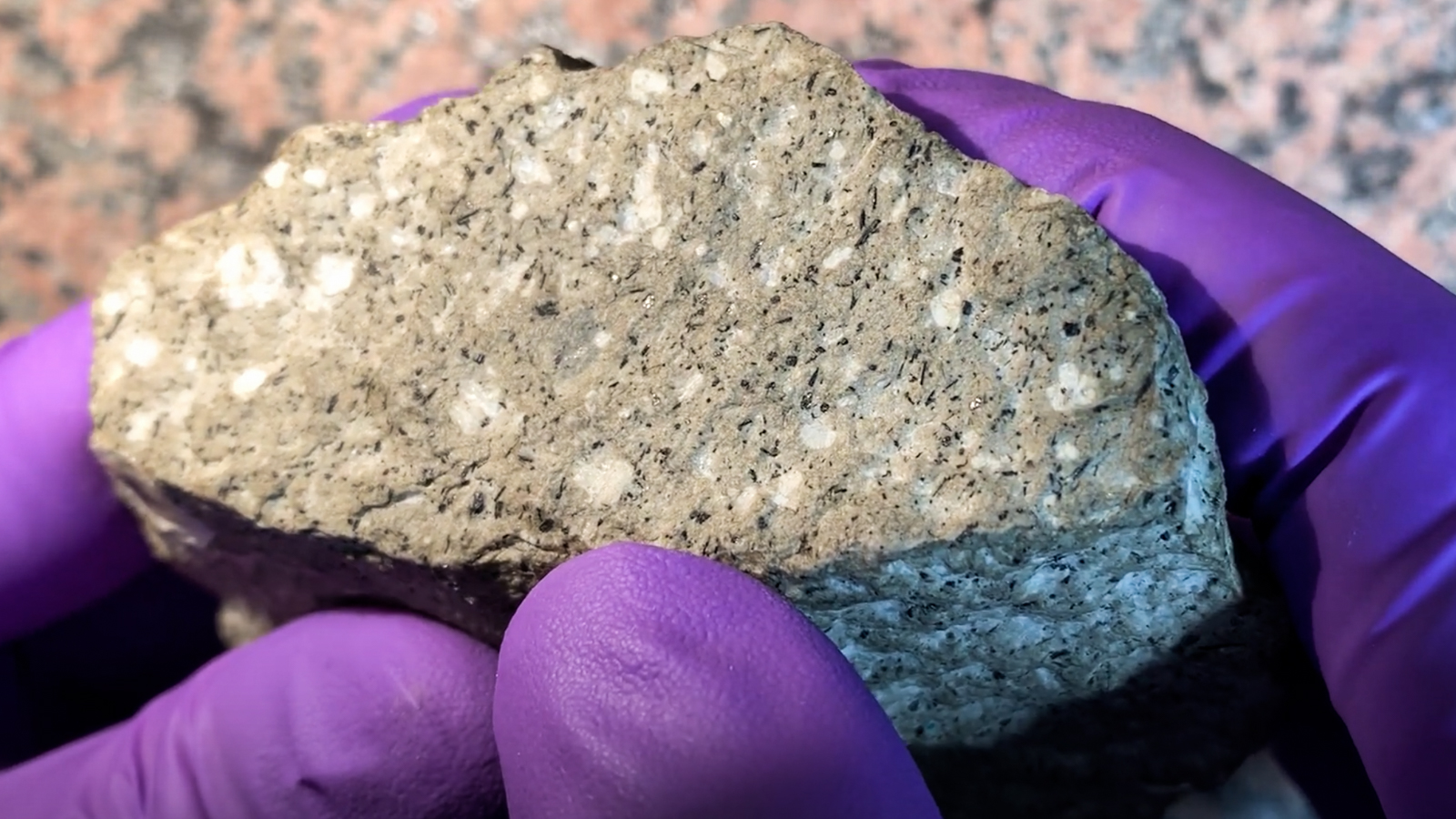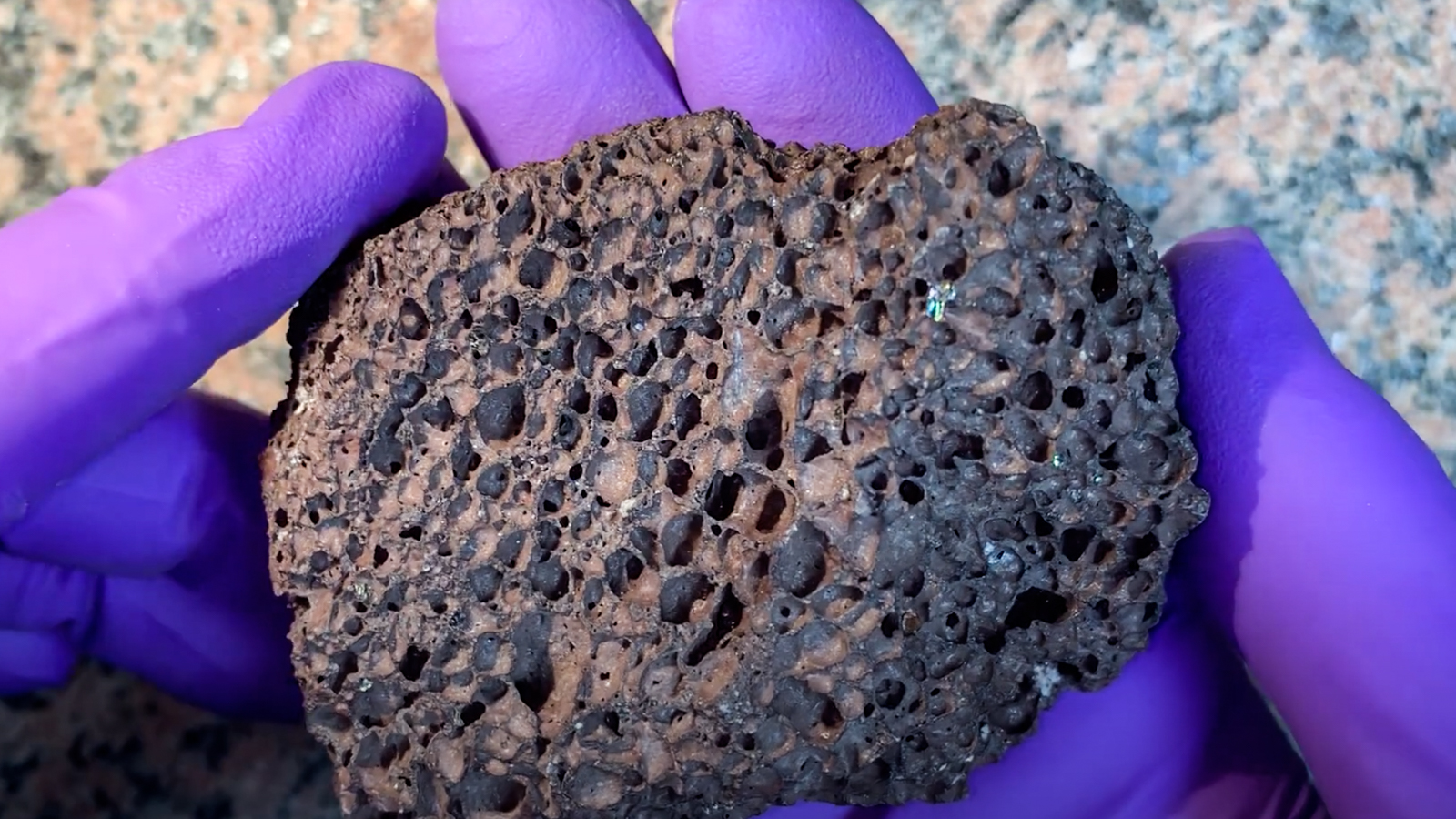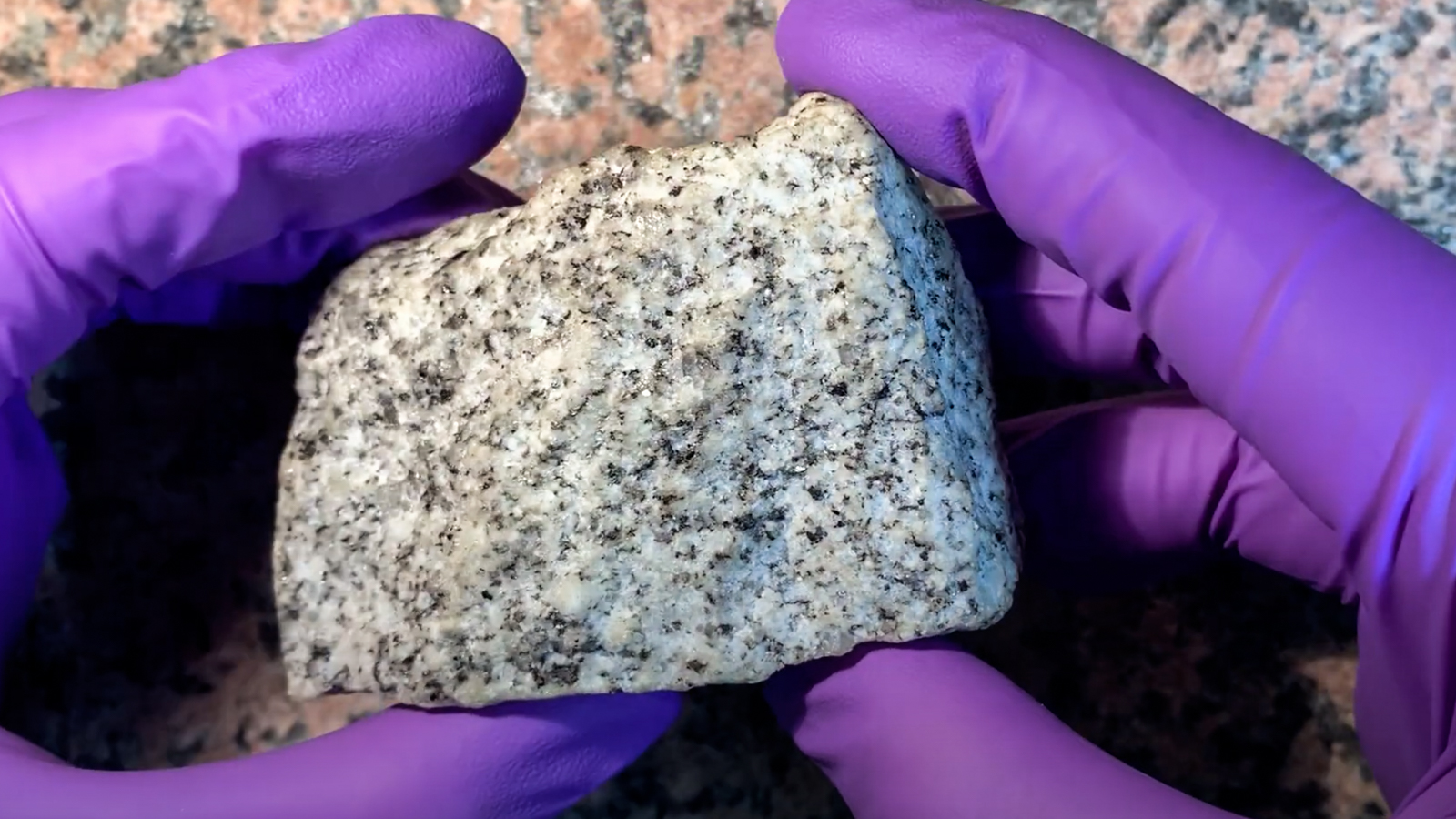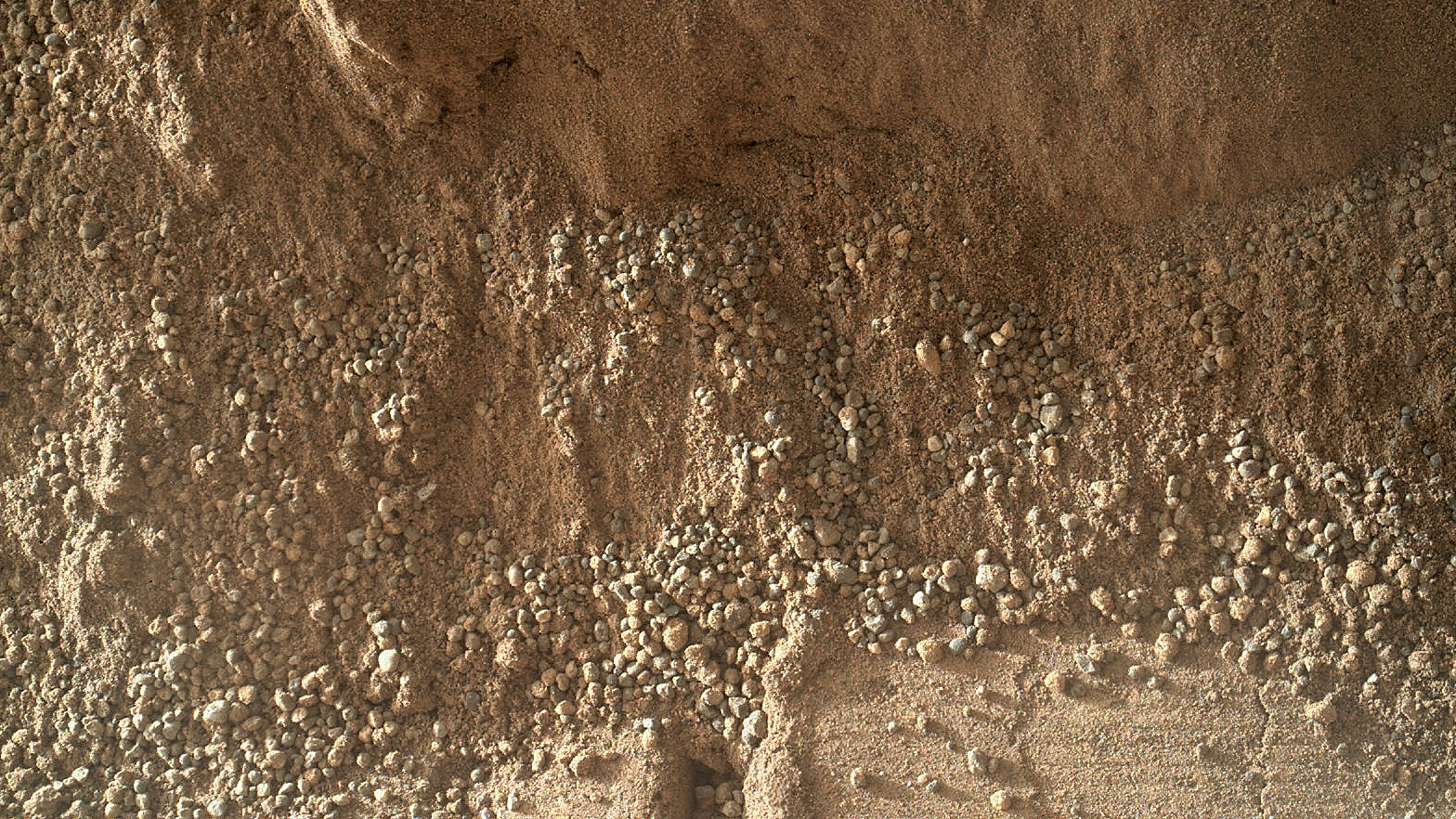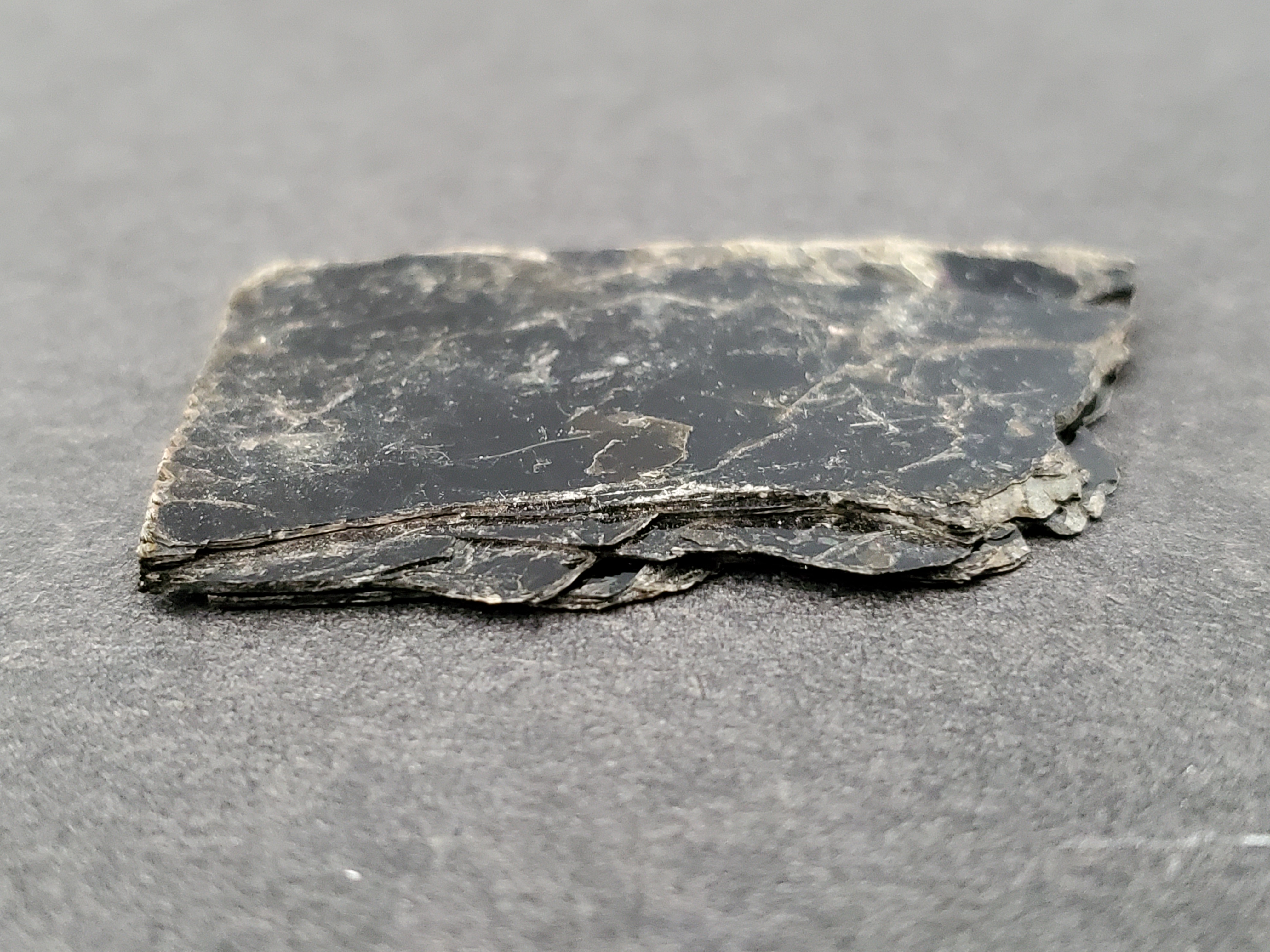Classroom Activity
Candy Bar Geology
Overview
Students learn about rocks by making connections between familiar candy bars and unfamiliar samples. Students will draw and describe the samples in everyday terms, pairing their observations with short descriptions that are in geologic field-note style.
Materials
Management
- Choose six to 10 candy bars from the list below to use as samples. Add a few extras to increase the complexity of the exercise.
- SnickersTM
- Milky WayTM
- "Bar None"TM
- TwixTM
- ButterfingerTM
- SkorTM
- Kit KatTM
- SymphonyTM
- Nestle CrunchTM
- WhatchamacallitTM
- MoundsTM
- P.B. MaxTM
- Mr. GoodbarTM
- Hershey with AlmondsTM
- Cut the candy bars so that a flat interior surface is exposed. Place each of the cut samples in a small plastic bag. Each team of students will get one sample.
- Cut the Field Note Descriptions into numbered segments and arrange them on a table so that students may easily read and reach each of them. Number sequence is not important. You may have more descriptions than types of samples.
- Have a variety of real rock samples or images available and/or have students bring their own samples.
- Students can practice their skills independently using the Describe Rocks Like a NASA Scientist student project.
Background
Geologists study a planet's solid features, like soil, rocks, and minerals. There are many types of rocks and minerals that make up our planet – as well as the Moon, Mars, and other rocky worlds. By studying these features, we can learn more about how rocky worlds form and change over time.
On Earth, geologists have the luxury of making observations and collecting rock samples in person. To study rocks on other planets, like Mars, we have to rely on spacecraft that can use their cameras and tools to act as our eyes and hands.
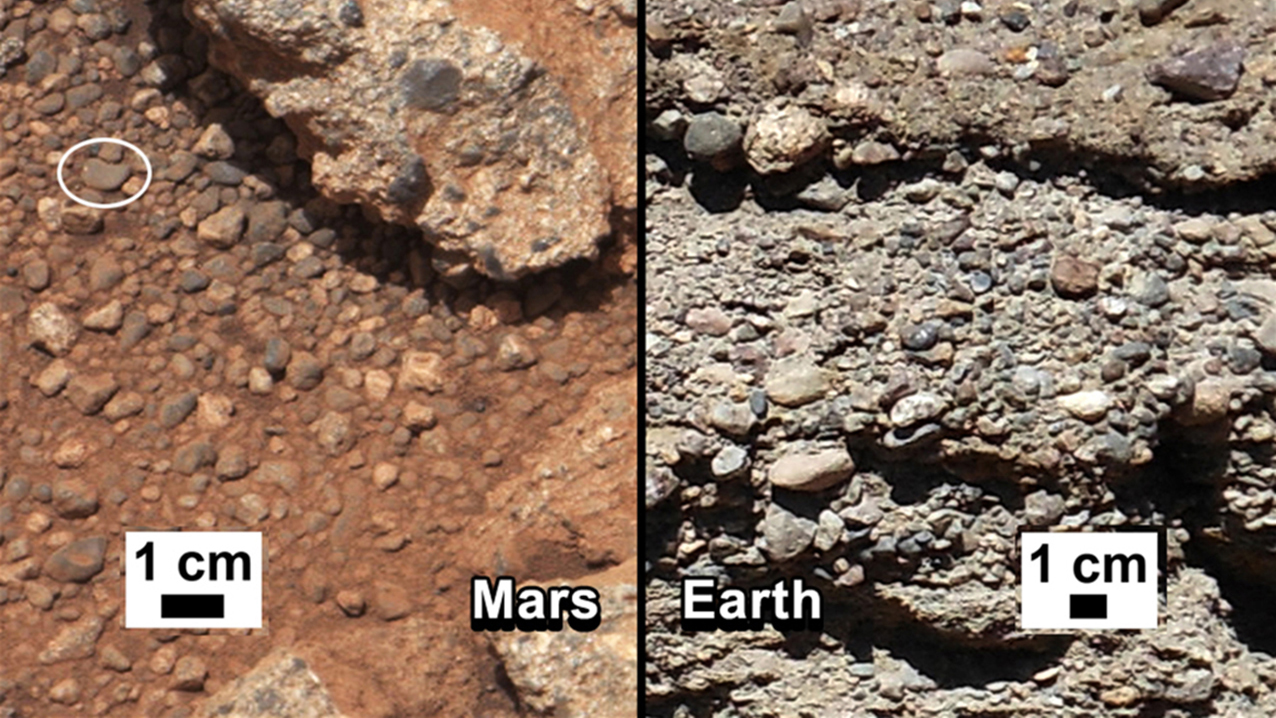
The image above, captured by NASA's Curiosity rover on Mars, shows an outcropping – an area where ancient bedrock underneath the surface is exposed. Outcroppings on Earth are known to form as a result of running water and create gravel that's a similar size and shape. By comparing this image of Mars to similar features on Earth, geologists have been able to theorize that Mars might have also once had running water. › Full image and caption | + Expand image
For example, Mars rovers like Curiosity and Perseverance use cameras to send detailed pictures of the Martian surface back to us on Earth so we can explore from a distance. We then compare the images to known substances on Earth to better understand and theorize about how the Martian rocks and minerals formed. Rovers, as well as spacecraft that orbit or fly by planets can also be equipped with scientific instruments called spectrometers that allow scientists to measure the chemical makeup of specific rocks on the surface or large surface-regions measured from space.
In this activity, students will be describing samples similar to how geologists describe rocks on Earth, Mars, and other worlds. Students can reference these words for their descriptions. They can also practice using these terms to describe rocks in the Describe Rocks Like a NASA Scientist student project.
Vocabulary:
Procedures
- Divide students into groups of two or three. Distribute one sample and one worksheet to each team. If possible, allow teams to choose a sample. Important safety note: Due to the risks posed by food-borne illness and allergies, remind students that they should NOT eat the samples.
- Have students describe and sketch their sample using familiar vocabulary, but no food terms. For example: "The outer layer is a thin coat of light-brown material containing tan-colored round chunks."
- When students have finished sketching and describing their samples, have them pair their sketch, description, and sample with the displayed field notes. Emphasize that students' observations will not be exactly like the field notes. They will likely try several matches before they have the accurate pairing. Throughout this step, verify that students have the correct pairs. If students have difficulty finding the description of their candy bar, encourage them to interact with other groups for help.
- When they have found the field note that describes their sample, have students place their sketch, description, and sample next to the correct field note.
- When all students have successfully matched their samples, each team may describe its sample to the class. The class should have access to the sample and the prepared written description during the discussion. Sketches may also be displayed.
Discussion
Conduct a discussion that touches on the assessment metrics listed below, which emphasize the basic skills needed to be a good scientist. During the discussion, the teacher may expand and help define the geologic vocabulary in context and encourage students to apply it to their own samples.
Assessment
- Did the students make detailed observations of a sample?
- Was the task accomplished using teamwork?
- Although the student's descriptions differed from those provided and each team had a different style, were the skills and processes used to observe and record the data the same for each group?
- Did the students communicate their observations and then share their findings verbally and in writing?
Extensions
Repeat the activity, focusing on meteorites:
A meteorite is an object that originates in outer space and survives its passage through the atmosphere to reach the surface of a planet or moon. Meteorites can be classified as stony, iron, or a stony-iron combination. Visit NASA's Astromaterials Research & Exploration Science website to learn more about the types, age, and origin of meteorites.
Meteorite Vocabulary:
- Fusion crust - thin black, glassy or ashy crust on the surface of meteorites that forms when the outer layer melts as the meteor enters Earth’s atmosphere.
- Chondrules - small, round igneous granules found embedded in stony meteorites.
Use a Meteorite Sample Disk or photograph, or prepare your own "meteorite" samples using these recipes (or view on Google docs), which closely represent meteorite characteristics.
- Peanut Brittle for chondrites
- Rocky Road for chondrites
- Chocolate for iron without fusion crust
- 3 MusketeersTM for achondrite with fusion crust
- Rice cereal treats for meteorite regolith breccia
- Chocolate brownie for carbonaceous chondrites
Explore More
-
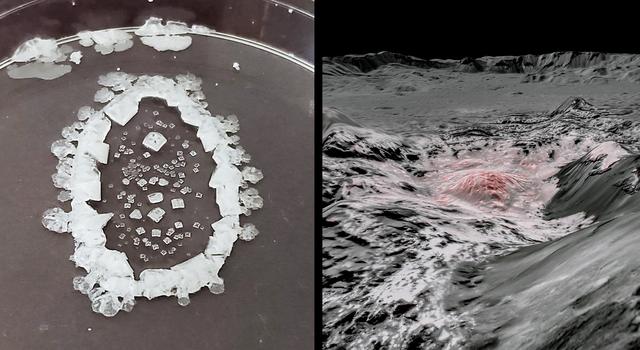 Lesson
LessonMineral Mystery Experiment
Students explore the science behind an intriguing planetary feature by creating saline solutions and then observing what happens when the solutions evaporate. Now updated with findings from Mars!
Subject Science
Grades 2-12
Time 30-60 mins
-
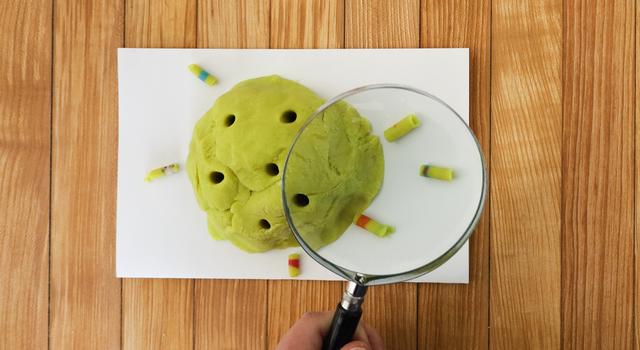 Student Project
Student ProjectExplore Rocks Using Core Sampling
Make a sedimentary “rock” from play dough and use your geology skills to investigate it!
Subject Science
Grades 3-8
Time 30-60 mins
-
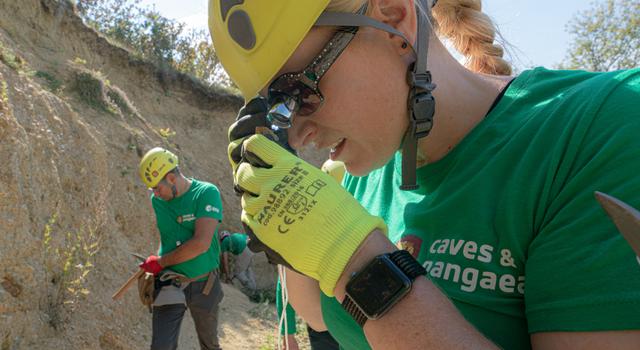 Student Project
Student ProjectDescribe Rocks Like a NASA Scientist
Learn how to describe rock samples like a NASA scientist. Then, take a quiz to see if you can match edible rocks made of candy bars – and real rocks from Earth and space – to the correct description.
Subject Science
Grades 4-8
Time 30-60 mins
-
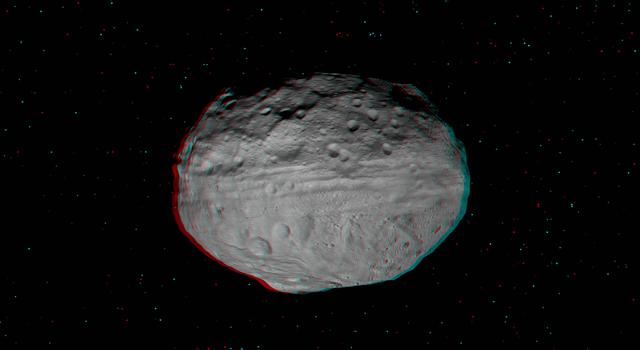 Slideshow
SlideshowWhat's That Space Rock?
Find out how to tell the difference between asteroids, comets, meteors, meteorites and other bodies in our solar system.
Subject Science
Grades 5-12
Time Less than 30 mins
-
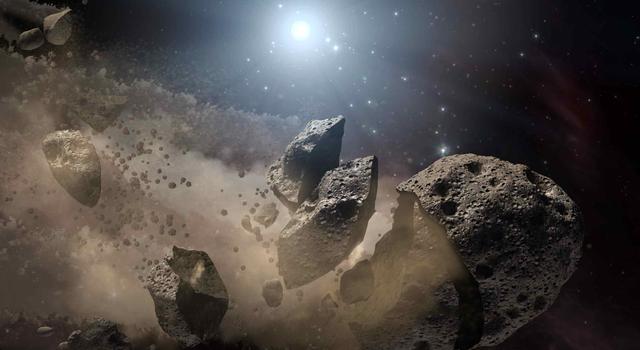 Problem Set
Problem SetMath Rocks: A Lesson in Asteroid Dynamics
Students use math to investigate a real-life asteroid impact.
Subject Math
Grades 8-12
Time 30-60 mins
-
 Lesson
LessonStudying Rocks on Mars Using Light
Students learn how Mars rovers use spectroscopy to study the chemical composition of rock samples on the Red Planet then model the process in the classroom.
Subject Science
Grades 9-12
Time 30-60 mins







